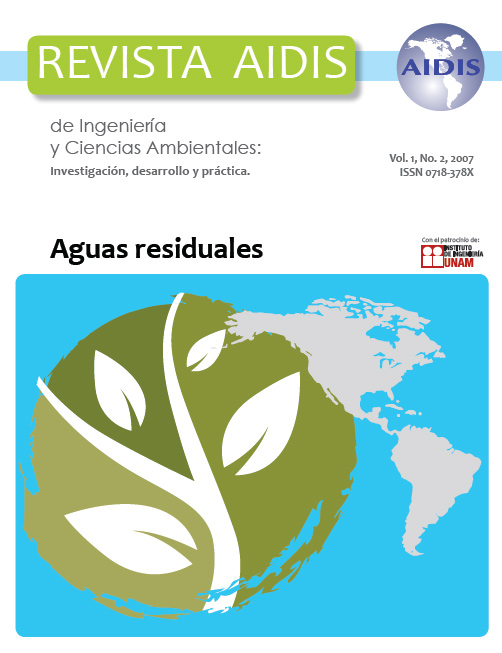Tratamento de efluente doméstico de lodos ativados por membrana de ultrafiltração
Contenido principal del artículo
Resumen
The treatment of municipal wastewater has been focused on the reduction of the environmental impacts produced by the disposal of these effluents into water bodies. Nowadays, however, due to the lack of water and degradation of water sources, the treatment of effluents is focused on the creation of sources for the reuse of water. This work has the purpose of studying the treatment of municipal wastewater in a conventional biological activated sludge system followed by an ultrafiltration membrane system. A tubular ultrafiltration system was used with an average pore size of 0.05 μm and a membrane filtration area equivalent to 1.4 m2. Filtration rates ranging from 20 to 24 L.h‐1m‐2 were observed. This filtration rate may be considered relatively low if compared to other studies. A 14 to 17 L.h‐1m‐2bar‐1 filtration rate relative to the pressure applied during the filter run was also observed. The physicochemical characteristics observed in the filtrate were an absence of suspended solids and a COD in the composite sample of approximately 19 mg.L‐1; an average pH of 6.99 ± 0.13; turbidity of 0.377 ± 0.13 NTU; and a conductivity of 698 ±93 uS.ohm‐1. Thus, in comparison to other water standards it may be affirmed that in terms of quality the use of membrane treatment systems after biological systems is feasible and recommended. However, it is necessary to carry out research to minimize the membrane fouling phenomena.
Detalles del artículo
Cómo citar
[1]
Nagamine Costanzi, R., Hespanhol, I. y Mierzwa, J.C. 2009. Tratamento de efluente doméstico de lodos ativados por membrana de ultrafiltração. Revista AIDIS de ingeniería y ciencias ambientales: Investigación, desarrollo y práctica. 1, 2 (nov. 2009).
